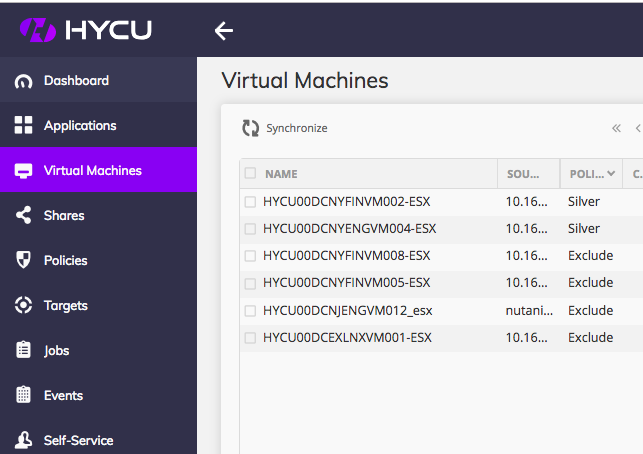Modernize Your VM Backup for Today’s Data Center
How to Protect Your Virtualized Application Data
To make hybrid cloud models and all that they offer a reality, data center modernization is essential. But if you look at how today’s data center has evolved from a completely physical infrastructure to a more virtualized model, it’s tempting to focus on the benefits and ignore the challenges.
A modernized data center encapsulates operating systems and applications into a virtual machine (VM) and consolidates what are often called legacy distributed systems. Both the good news and bad news is that when bringing this three-tiered architecture into a consolidated infrastructure, your business-critical applications are now residing in fewer distributed resources. As a result, protecting those precious resources--in this case your VMs-- and the application data housed in them, is imperative and must be a top priority for IT.
Doing VM backup snapshots at the hypervisor level does allow for the VM to be protected, with one caveat. The VM must be in a quiesced state and a buffer log must be created to capture any changes during the backup. Depending on I/O traffic, this often leads to the VM becoming unresponsive while in quiescent mode. This delay, known as VM stun, can create server failover, even within hyper-converged infrastructure (HCI) systems.
Maintaining consistency during backup is another potential problem. The instant the backup is completed, the buffer log must be managed, with any changes applied to the VM, a time-consuming task. And as VMs have grown, backup periods and quiescence times have also grown—which makes applying the buffer log even more time-consuming.
This unresponsiveness of the VM happens during backup at the hypervisor level. In a recent blog post about Modernizing Your Backup and Recovery, we touched on why it’s important to protect your virtualized applications and why you want to avoid VM stuns. Let’s take a closer look at this important topic.
Avoid VM Stun and Protect Your Critical Application Data
Let’s not forget the ultimate goal of a modern data protection solution--to protect business data and applications and do it as simply and as automated as possible. Nobody is happy when a critical business application running on a virtual machine (VM) becomes unresponsive during backup and recovery. But it could be even worse if you factor in potentially losing data residing in that application during a process that’s supposed to protect your data.
Disadvantage of Hypervisor Level Snapshots
As mentioned, VM stun can occur during hypervisor-level snapshots on your virtual machine. The snapshot can cause I/O latency problems when a large number of I/O requests come into the "stunned" VM, are stored, and then consolidated when the backup completes. This large backlog of I/O requests slows the consolidation process.
Hypervisor-level snapshots can create stuns that last for a duration of milliseconds or much longer, depending on the level of I/O traffic. A stun can negatively affect your production environment with primary server failover that results in downtime, which is never a good thing. But your most critical business applications are also often severely impacted with long timeouts with this type of hypervisor-level snapshot—especially when you have high I/O traffic activity caused by this sluggish data protection process.
Another cause of VM stun occurs when taking a hypervisor-level snapshot with virtual machine memory, which renders the VM inactive while the memory is written to disk. In addition, there are configuration issues with ESX/ESXI VMs that can cause virtual machines to be unresponsive.
Ensuring High Availability during Backup and Recovery
One solution to avoid VM-stun related downtime is HYCU Data Protection for Nutanix, which is the only purpose-built data protection solution designed with the Nutanix administrator in mind. It offers application-aware storage-level snapshots from the Nutanix data protection layer, not just for efficient backup but also for rapid, infrastructure-free recovery.

HYCU for Nutanix is a data protection solution specifically designed to work on Nutanix and leverages Nutanix V3 snapshotting API. This API is able to perform integrated, storage-level snapshots that totally eliminate VM stun for both ESX and AHV virtual machines. Because the storage level snapshots are granular, occurring at a lower level and capturing only recent updates, they eliminate the need for recommits. In addition, the data movement is offloaded onto the HYCU appliance and does not take place in the VM production environment, so you get a more efficient solution with minimal impact to your VMs.
Embrace the New
The way to protect virtual machines and applications in an HCI environment is by eliminating the VM stun issue. By offering an alternative to VADP and the hypervisor-level snapshot, HYCU provides an impact-free way to protect VMs and applications by integrating with the Nutanix data protection layer and the underlying snapshots for complete protection.
Why wait?
